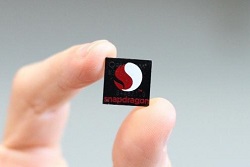Qualcomm has announced that it is working with Deutsche Telekom (DT) on the first LTE Direct operator trial in Germany.
LTE Direct is device-to-device technology that uses LTE spectrum and infrastructure and can be used by operators across a range of applications – including social searching, venue-specific services and push advertising.
The platform, which would be managed and owned by DT, will use licensed spectrum, allowing mobile operators to employ it as a way to offer a range of differentiated applications and services to users.
The technology is based on the LTE physical layer to provide a scalable and universal framework for discovery and connecting proximate peers.
Qualcomm has benefitted from the significant growth in the 4G LTE market. The growing acceptance of the technology has prompted the chipmaker to develop chips and devices that will be compatible with this network.
In a separate announcement, the manufacturer announced that it had demonstrated the first live use of LTE Category 6 connectivity alongside Samsung at the Mobile World Congress in Barcelona.
The demonstration, which was done by using a a modified Galaxy Note 3, featured Qualcomm’s Snapdragon 805 SoC and a Gobi 9×35 LTE modem.
The modified Galaxy Note 3 prototype is said to have reached download speeds of 300Mbps.
The LTE Cat6 connection demo was made possible thanks to Qualcomm’s fourth-generation 3G/LTE multimode modem, the Gobi 9×35 (cousin of the Gobi 9×30), which, according to Qualcomm, is twice as fast as anything found commercially.
The modem works by using a carrier aggregation technique in which it combines two 20 Mhz bands to double the available bandwidth. The modem is a successor to the Gobi 9×25 series that was widely used in Qualcomm’s LTE-enabled offerings last year.
The chip manufacturer also claimed that it is the first cellular modem to be announced based on 20 nm technology.
In addition, the modem is also backwards compatible with legacy cellular networks like WCDMA /MC-HSPA, CDMA 1x/EVDO Rev. B, GSM/EDGE and TD-SCDMA.



